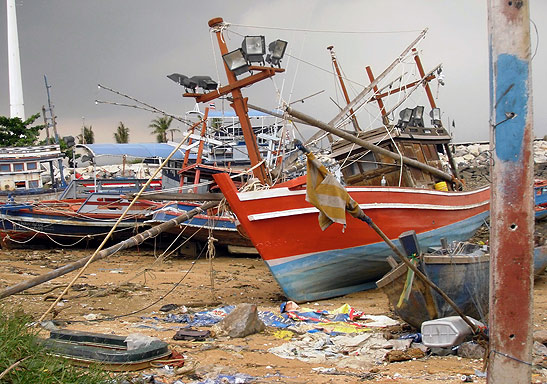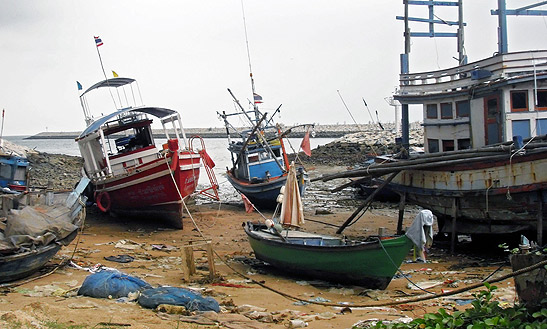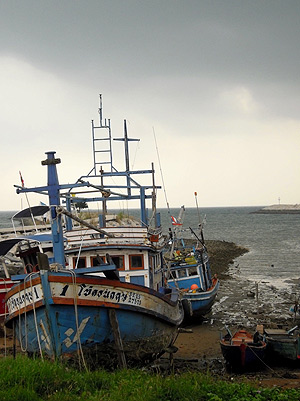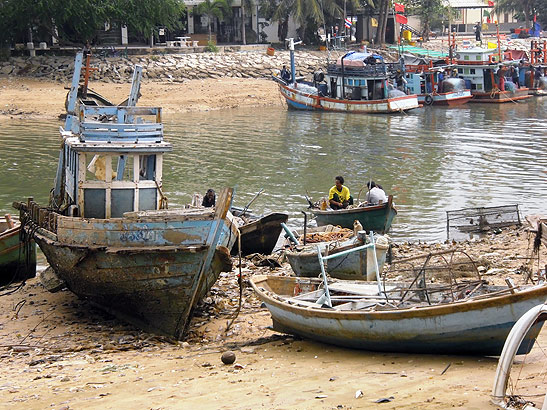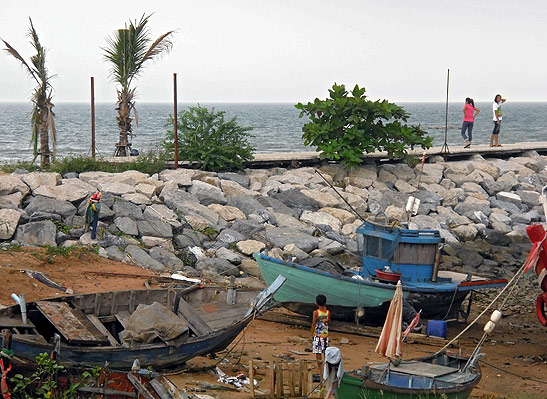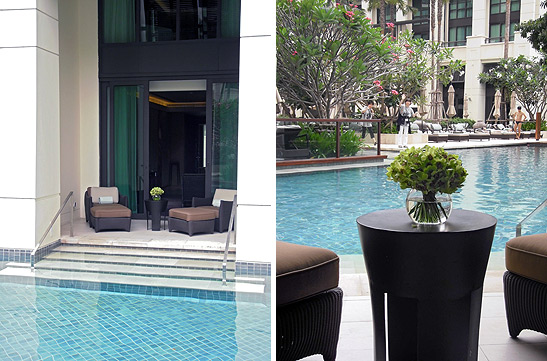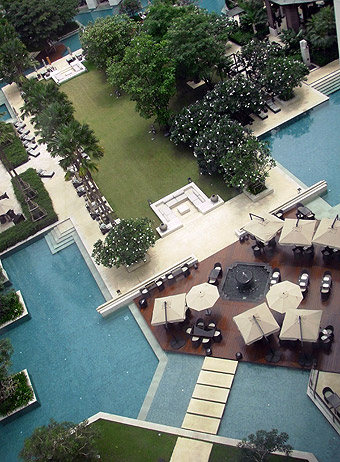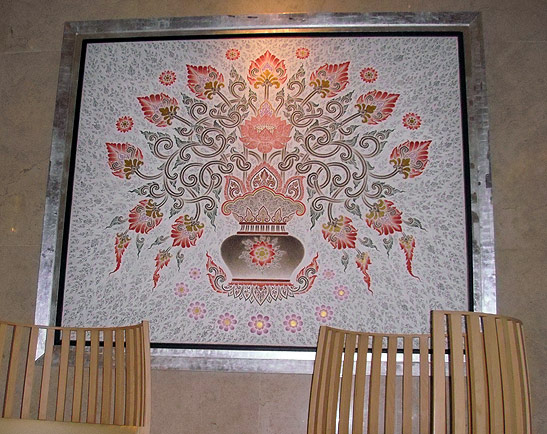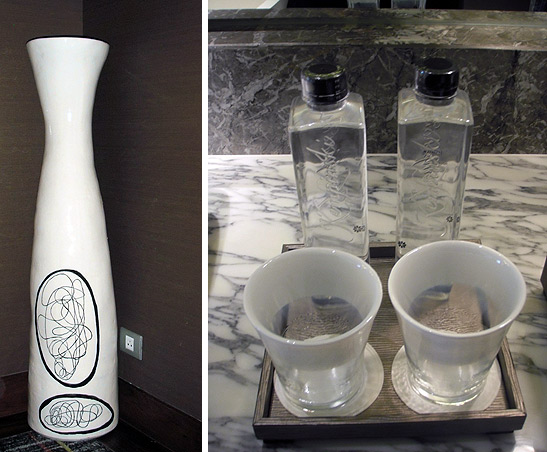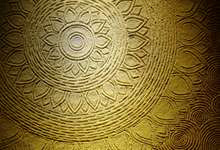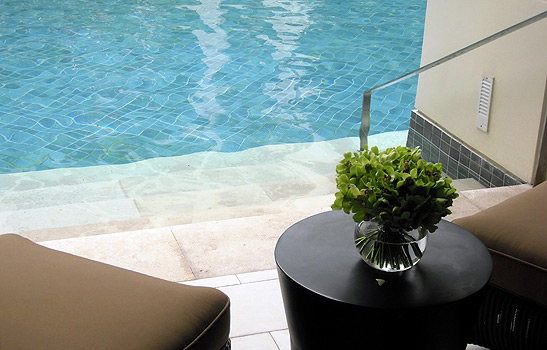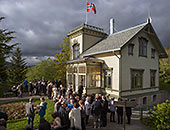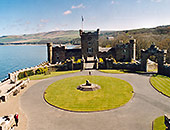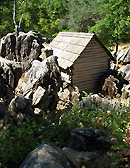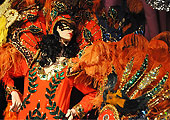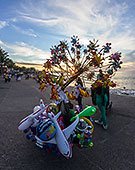 |
 |
|
 |

|
Thailand: From
the Wreckage, a Lotus Blooms
It’s funny, primarily because Baan means village and Amphoe means district, and there exist many different English spellings for anything in Thai. I see it written Baan-Am-Per, Ban Amphur and at least a few others. But the absurdity phases me none. On the contrary, the desolated abandonment of the entire scenario beckons me to stay. I got a thing for abandoned places.
Malabar Restaurant is cheap. As I meticulously pick through a delicious grouper fish, a syrupy instrumental version of Neil Diamond’s Sweet Caroline fills the room. Moments later, the sky darkens to near-black and the rain suddenly becomes violent. The employees scramble to shut the sliding glass barriers that separate the restaurant from the outside patio. I am now safe to watch the abandoned fishing boats in all their ruined glory. With the storm now in full force, the boats look even more wrecked and desolate. Many Thais believe in animism, and I wouldn’t be surprised if spirits from times past are lurking here somewhere.
After experiencing the desolated and remote wreckage at Baan Amphoe, it was time to revel in the polar opposite: sheer luxury. Shattered nautical wreckage and luxury hotels can be seen as merely two sides of the same coin. Just like yin and yang, each scene compliments the other. So, one day later, the opulent Siam Kempinski Hotel in Bangkok became my next place of contemplation. After all, what would a bleak stew of conked-out fishing boats be without a contradictory scenario? In particular, the Garden Wing of the Siam Kempinski features 21 swim-up rooms with direct pool access (see photos).
The lobby alone functions as a 24-hour art gallery of sorts, with lotuses and splashing water serving as the foundation and source inspiration for the rest of the collection. The wall sconces are formed like the decorative fingernails of traditional Northern Thai dancers, with lotus patterns blooming from splashing water. Similar lotus patterns appear on the elevator doors and signage, as well as the employees’ uniforms.
Especially for a traveler in Thailand, where Buddhism penetrates everything, all of this leaves an indelible impression. The lotus in ancient worlds was believed to symbolize the union of the four elements: Earth, Air, Fire and Water. Its roots are in the earth, it grows in and by means of water, its leaves are nourished by air and it blooms through the power of the sun’s fire. Therefore, the lotus can represent the fourfold order of the natural world. The unfolding petals of the lotus also symbolize the expansion of the enlightened self. As the saying goes: “From the darkest mud blooms the brightest lotus.” One needn’t eliminate the imperfection, the mud, the wreckage, in order to bloom. It is precisely in that mud where our own true nature thrives. And yes, I am transformed. In a period of just two days, I have traversed a tiny slice of the Thai landscape. From the abandoned wreckage and dreariness of a desolated beach at Baan Amphoe to the opulent environs of the Siam Kempinski Hotel, I have bloomed.
Related Articles: |
|
Your tea adventures are especially interesting because I've always associated tea with British etiquette or a bevy of women wearing dainty victorian costumes and sipping tea with their little pinky sticking out. To see Tea from a man's perspective brings new light in a man's psyche. I've been among the many silent admirers of your writings for a long time here at Traveling Boy. Thanks for your very interesting perspectives about your travels. Keep it up! --- Rodger, B. of Whittier, CA, USA
|
|
| ||||
|
| ||||
|
| ||||
This site is designed and maintained by WYNK Marketing. Send all technical issues to: support@wynkmarketing.com

|






